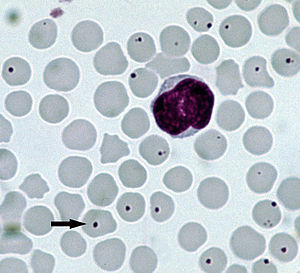Keywords
Human granulocytic anaplasmosis, COVID-19, cytokine storm
Abstract
Introduction: Human granulocytic anaplasmosis (HGA) is a tick-borne illness caused by the bacterium Anaplasma phagocytophilum. HGA has a widely variable clinical presentation and can be life-threatening.
Case description: A 77-year-old man was transferred from an outside facility with altered mental status, a fever of up to 40.5°C, and shortness of breath. Laboratory analysis revealed a progressively worsening pro-inflammatory state and abnormalities in the patient’s coagulation studies. With clinical and laboratory evidence concerning for potential COVID-19 infection, the patient was placed in isolation as a precaution. The results of two COVID-19 tests, given approximately 24 hours apart, were negative. The patient’s spouse confirmed a bug bite to his upper extremity while working outdoors. His symptoms resolved completely after a 10-day course of empiric doxycycline.
Discussion: The diverse clinical presentations of HGA necessitate a broad differential diagnosis, including viral, bacterial and non-infectious aetiologies. In severe cases, a cytokine-mediated immune cascade can occur (namely, cytokine storm) leading to devastating downstream effects. This cytokine storm can be seen in many other diseases, but most recently it has been demonstrated in the novel coronavirus disease 2019 (COVID-19).
Conclusion: Here we present a case of HGA in which diagnosis was delayed due to mimicry of COVID-19 infection. This case highlights the importance of taking clinical and social histories, seasonality and geography into account during diagnosis, and maintaining a broad differential with non-specific symptoms. Despite the current COVID-19 pandemic, we recommend that HGA remains in the differential diagnosis of a pro-inflammatory state with an atypical respiratory presentation.
References











